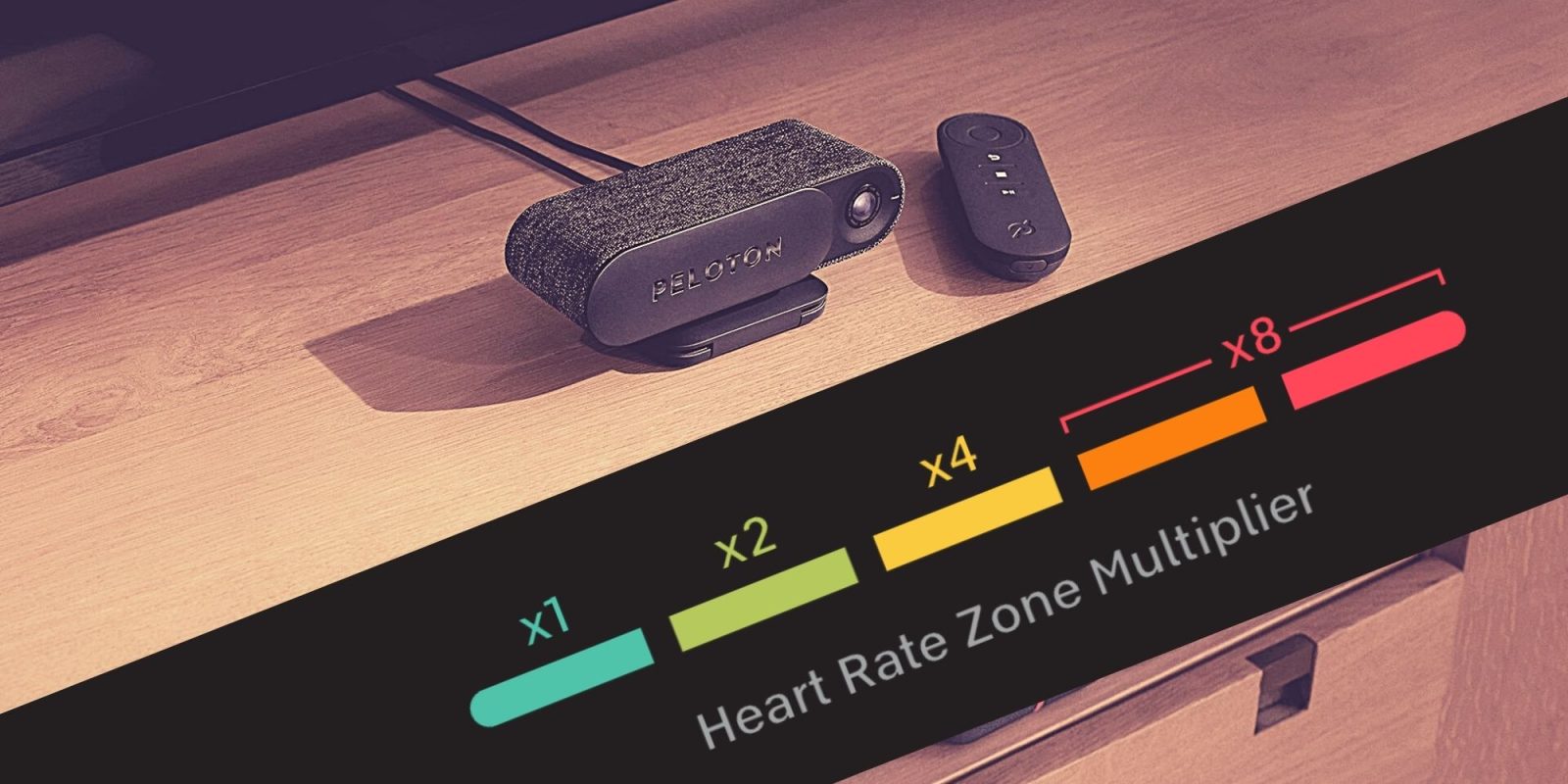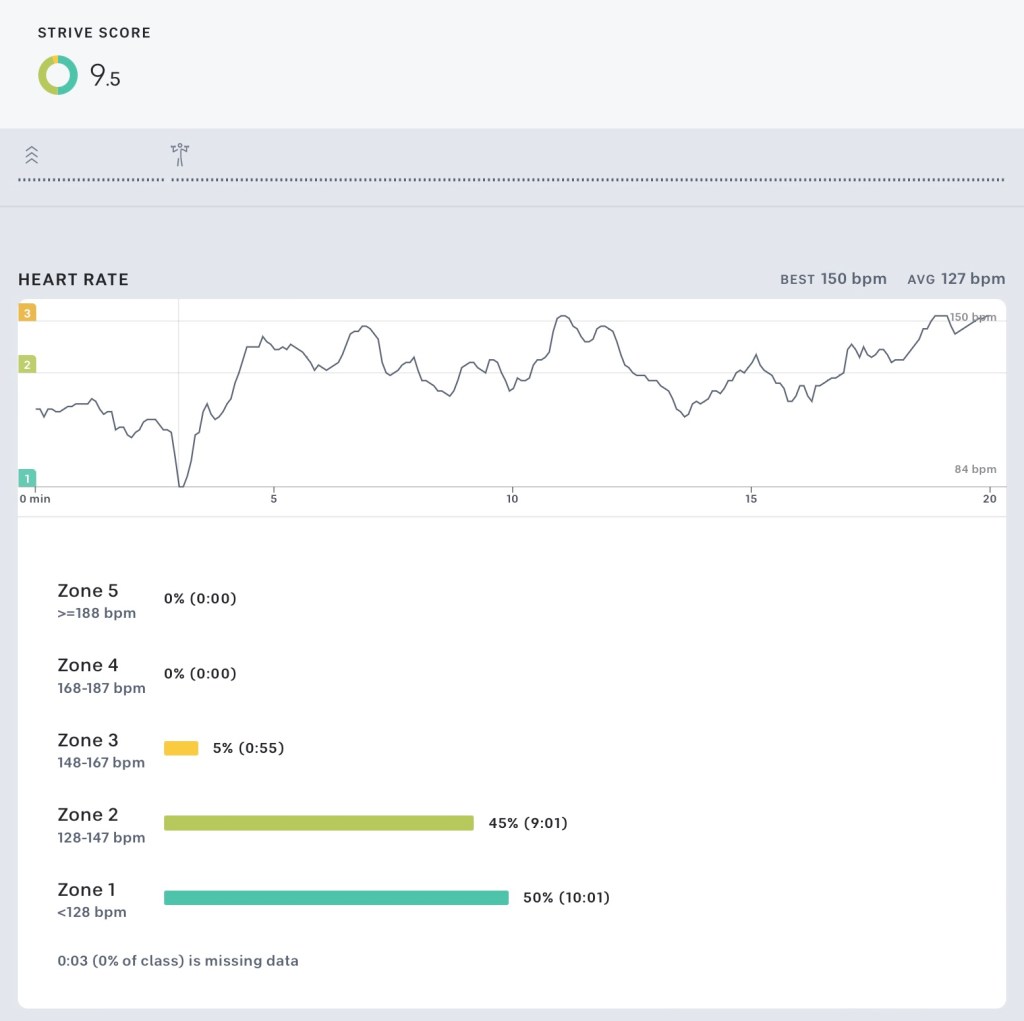
When reviewing the new Peloton Guide, I noticed that my Strive Score seemed to be pretty low. At the time, I didn’t think much of it. But after seeing comments from a few others about their Strive Score, I figured I would investigate it further. Here is what I found.
What is the Peloton Strive Score?
For those unfamiliar with Strive Score, it is a metric Peloton added last year to have members gauge their efforts for each class. Points are accumulated based on how long you spend in each of the five heart rate zones.
Here is a breakdown of how the Strive Score is calculated:
Zone 1: up to 65% of Max Heart Rate = 1x
Zone 2: 65%–75% of Max Heart Rate = 2x
Zone 3: 75%–85% of Max Heart Rate = 4x
Zone 4: 85%-95% of Max Heart Rate = 8x
Zone 5: 95%+ of Max Heart Rate = 8x
Does the Peloton Guide give a lower Strive Score?
To see if there was an issue, I went and compared my Strive Score from sessions taken on the Peloton Guide with previous workouts. It turns out that the Peloton Guide currently gives a much lower score.
For example, here is the data from a “20 min Arms & Shoulders Strength” class I took last month on my Peloton Bike:

Now, here is the data from another “20 min Arms & Shoulders Strength” class I took this weekend on the Peloton Guide:

As you can clearly see, my average heart rate was much higher during my workout on the Peloton Guide. However, my Strive Score was also cut in half.
This is just one example of many that I looked at, and the same issue seems consistent with all workouts I took on the Peloton Guide.
It seems, as of now, the Strive Score algorithm on the Peloton Guide is not working as intended. Check your own data and let us know if you are seeing the same thing.
Related articles:
- 13 must-have accessories for your new Peloton Guide
- The Peloton Guide won’t count your reps, but this Peloton Tread can!
- Peloton Strive Score: How to set (more accurate) heart rate zones
FTC: We use income earning auto affiliate links. More.


